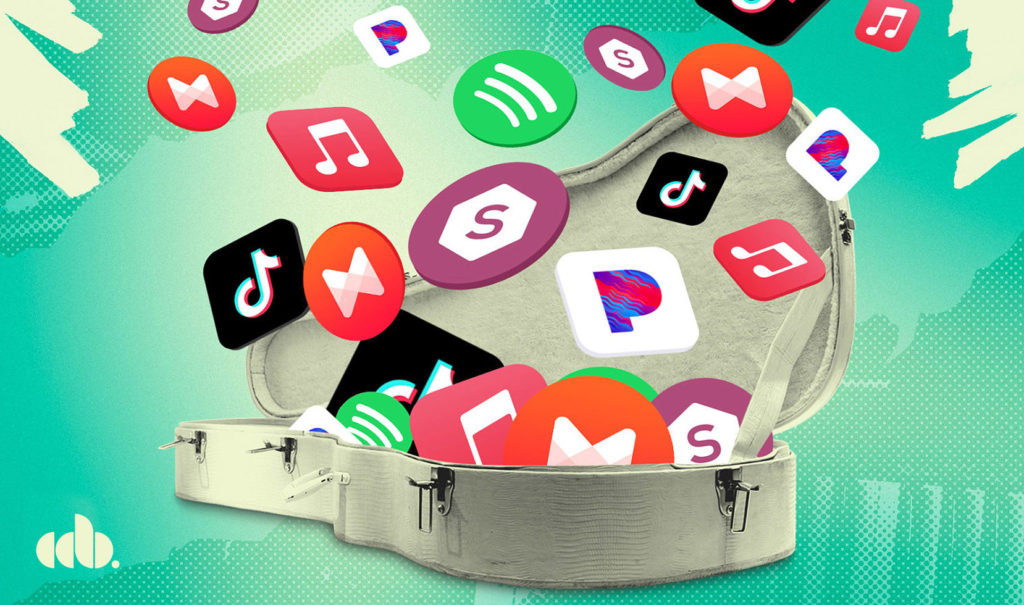
The music industry has transformed dramatically in recent years. Independent artists now have the tools and resources to release their tunes on their own terms. Gone are the days when you needed a record label to get noticed. Today, independent music distribution is within reach for anyone with creativity and ambition.
Imagine sharing your sound with the world while keeping full control of your art and earnings. That’s the power of DIY music release! With countless platforms at your fingertips, it can feel overwhelming to navigate this new landscape. But fear not; we’re here to help you break down the essentials of effective independent music distribution.
Whether you’re looking to promote independent music or simply expand your reach, understanding how digital distribution works is crucial for success. Let’s dive into everything from choosing the right platform for your needs to utilizing social media effectively—all designed to help you build a loyal fanbase and monetize your passion in this vibrant musical era.
The Power of Independent Music Distribution
Independent music distribution empowers artists like never before. It allows you to take the reins of your career, giving you control over your music and its release.
With a myriad of digital platforms available today, getting your tracks onto major streaming services is easier than it once was. This access means more opportunities for exposure and engagement with listeners worldwide.
You can now decide how to market your sound without relying on traditional record labels. Self-publishing music gives you the freedom to express yourself authentically while retaining all rights and royalties.
This shift has also democratized the industry, allowing diverse voices to emerge in ways previously unimaginable. Your unique story matters just as much as any mainstream artist’s narrative—independent music distribution levels the playing field and fosters creativity in every corner of the scene.
Understanding the Different Platforms for Music Distribution

Navigating the world of music distribution can feel daunting. With numerous platforms available, it’s essential to know your options.
Digital distribution services like DistroKid and CD Baby make it easy for independent artists to get their music on streaming platforms such as Spotify, Apple Music, and Amazon Music. These aggregators simplify the process by handling licensing and royalties.
Bandcamp is fantastic for those wanting direct-to-fan sales. Artists can set their prices while keeping a larger share of revenue. This platform fosters deeper connections with fans who appreciate supporting musicians directly.
For video content, YouTube remains a powerhouse. Promoting music videos here not only boosts visibility but also opens doors for monetizing through ads or fan donations.
SoundCloud is another valuable tool. It allows emerging artists to showcase tracks and gather feedback from listeners in real time—perfect for building an audience organically without heavy marketing costs.
Choosing the Right Platform for Your Music
Selecting the right platform for your music is crucial in today’s digital landscape. Each service comes with its unique advantages and audience reach.
For instance, streaming giants like Spotify and Apple Music provide vast exposure but may have stringent requirements. If you’re aiming to connect directly with fans, platforms like Bandcamp allow for more personalized interactions and direct-to-fan sales.
Consider your genre as well. Some platforms cater specifically to niche audiences that resonate with particular styles of music. SoundCloud is great for electronic and indie artists looking to build a community.
Don’t overlook the importance of distribution services too. Utilizing aggregators can streamline getting your tracks onto various streaming sites while managing royalties effectively.
Evaluate what aligns best with your vision, whether it’s broader visibility or cultivating a dedicated fanbase through tailored engagement strategies.
Tips for Successful Independent Music Distribution

To achieve successful independent music distribution, start by crafting a solid release strategy. Determine the best time to drop your music, considering trends and audience habits.
Engage with digital distribution services that cater to independent artists. Look for music aggregators like DistroKid or CD Baby that can help you place your tracks on major streaming platforms efficiently.
Set clear goals for each release. Are you aiming for Spotify playlist placements? Or perhaps you’re looking at Bandcamp for direct-to-fan sales? Each platform requires tailored approaches.
Don’t underestimate the power of visuals; create engaging music videos that resonate with your brand and message. They can significantly enhance your online presence and attract new listeners.
Keep track of your statistics after releasing singles or albums. Understanding listener data helps refine future releases and improve marketing strategies effectively.
Utilizing Social Media and Online Presence
Social media is a powerful tool for independent artists. It offers a direct line to your audience, allowing you to share your journey and connect on a personal level.
Platforms like Instagram and TikTok can showcase snippets of new tracks or behind-the-scenes content. Engaging visuals grab attention quickly in today’s fast-paced digital world.
Don’t underestimate the power of storytelling. Share how your songs came to life and what inspires you creatively. Authenticity resonates with fans more than polished images.
Utilizing platforms like YouTube for music promotion also opens up opportunities for deeper engagement through music videos or live performances.
Make sure to interact regularly with comments and messages; these interactions foster community. Encourage sharing, create challenges, or host Q&A sessions that invite participation from followers.
Building an online presence takes time but consistently engaging with your audience pays off in loyalty and support over time.
Collaborating with Other Artists and Industry Professionals
Collaborating with other artists can elevate your music to new heights. When you combine talents, you create something fresh and exciting. This synergy often leads to unique sounds that stand out in the saturated market.
Engaging with industry professionals is equally vital. Producers, sound engineers, and managers bring expertise that can refine your work. Their insights help navigate the complexities of independent music distribution.
Building relationships in the music industry opens doors for opportunities like playlist pitching or features on popular blogs. Networking at local shows or online forums allows you to connect meaningfully with others who share your passion.
Don’t hesitate to reach out! A simple message can spark a collaboration that resonates deeply with audiences. Sharing resources and knowledge benefits everyone involved while fostering a supportive community around independent music creation.
Conclusion

Navigating the world of independent music distribution can be an exhilarating adventure. With the right tools and strategies, you can take control of your musical journey. Embrace the power of digital distribution to share your art with a broader audience.
Selecting the appropriate platforms is crucial for getting your music heard. Whether it’s popular streaming platforms like Spotify or Bandcamp for direct-to-fan sales, understanding where to place your tracks will enhance visibility and engagement.
Utilizing social media effectively plays an essential role in building a fanbase. Platforms such as Instagram, TikTok, and YouTube are not just for promotion; they serve as spaces for genuine interaction with listeners. Share behind-the-scenes content, engage in conversations about your creative process, and encourage fans to participate in their own unique ways.
Collaborations can elevate independent music marketing efforts significantly. By teaming up with other artists or industry professionals, you tap into new audiences while creating exciting opportunities for growth.
Remember that releasing singles strategically can keep momentum high between projects. Each release should come with its own promotional strategy—consider playlist pitching or submitting to music blogs—and don’t overlook visual storytelling through engaging music videos.
With dedication and creativity, monetizing your music becomes more than possible; it turns into a sustainable reality as you harness crowdfunding options alongside traditional revenue streams like royalties from various online stores.
Success in independent artist endeavors lies at the intersection of artistry and strategic planning—a balance that empowers creators to thrive on their terms without compromising their vision. Let each step lead you closer to achieving your dreams within this vibrant landscape of independent music distribution.
Stay tuned for similar content, only on QAWire
